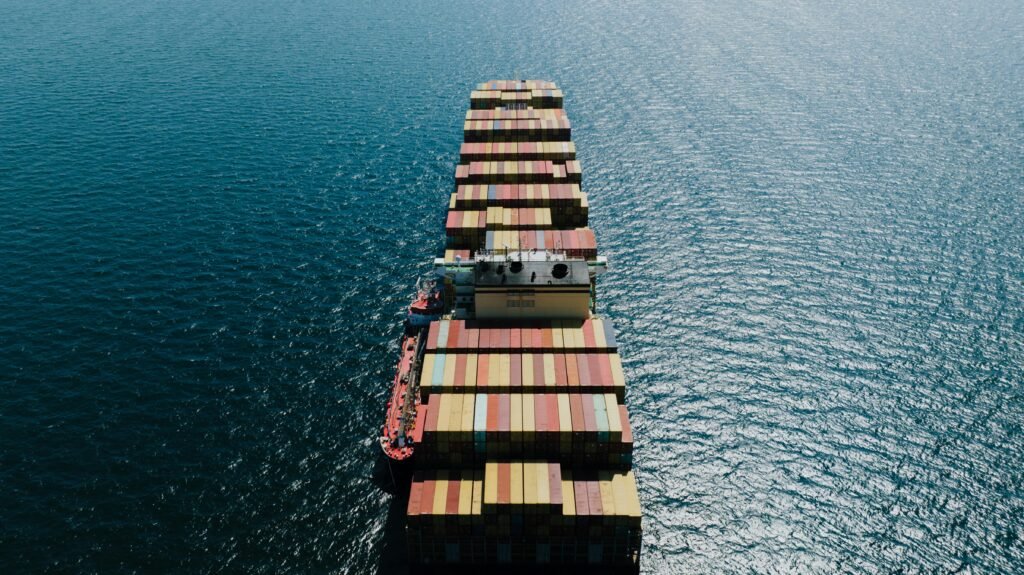Global Shipping Under Pressure: Why Emissions Compliance Is Now a Core Business Metric

By Eva Richardson | The Logistic News
April 15, 2025
Once an afterthought in boardroom conversations, emissions regulation has now become a strategic centerpiece for shipping executives worldwide. In 2025, the maritime industry faces the largest wave of environmental compliance obligations in its modern history—transforming not just fleets, but the very economics of global trade.
As governments intensify efforts to meet international climate goals, shipping companies must now navigate a complex landscape of regional rules, carbon taxes, and clean fuel mandates—or risk being sidelined in critical trade corridors.
“Environmental compliance is no longer a side project—it’s core to our profitability, risk exposure, and long-term survival,” said Gisela Broekman, Chief Regulatory Officer at one of Europe’s largest container carriers.
A Global Patchwork of Regulation
Today’s maritime operators are contending with a growing patchwork of emission control areas and regulations:
-
The European Union’s Emissions Trading System (EU ETS) now includes shipping emissions, requiring carriers to buy carbon allowances for voyages into and out of EU ports.
-
China’s coastal Emission Control Areas (ECAs) have expanded inland to cover major rivers and industrial hubs, tightening sulfur content limits and reporting thresholds.
-
The U.S. Inflation Reduction Act, though not maritime-specific, has pushed ports and shippers to align with low-emission transport strategies in federally funded corridors.
These layers of regulation vary in scope, enforcement, and penalties—but they all demand faster adaptation than the industry is used to.
“We’re now coordinating compliance across five legal frameworks for a single transpacific voyage,” noted a logistics manager at a Japanese bulk shipping company.
Fuel, Fleet, and Finance: A New Cost Triangle
Emissions compliance is reshaping operating budgets. According to the International Chamber of Shipping, the cost of decarbonization across the maritime sector could exceed $1.2 trillion by 2050. In the short term, carriers are investing in:
-
Alternative fuels such as methanol, LNG, and ammonia
-
Carbon capture and exhaust scrubbing technology
-
Energy optimization software for routing and engine efficiency
-
Shore power compatibility at key global ports
Older vessels are also being decommissioned at a faster rate, as their inefficiencies make emissions compliance uneconomical. Finance is following suit: banks and lessors now evaluate vessel carbon ratings under the Poseidon Principles, tightening capital access for polluting fleets.
From Compliance Burden to Competitive Edge
Despite the complexity, leading carriers are already converting emissions strategy into commercial advantage. Cleaner fleets are winning preferential berthing slots, qualifying for green shipping lanes, and appealing to cargo owners with net-zero supply chain commitments.
Logistics managers across the FMCG and retail sectors have begun including Scope 3 emissions criteria in their carrier procurement contracts, effectively making emissions performance a condition of doing business.
“The future of freight is not just fast and cheap—it’s visible, verifiable, and emissions-conscious,” said Maarten Dekker, sustainability director at a global 3PL.
Conclusion
The age of voluntary green pledges in maritime trade is over. As shipping becomes one of the most scrutinized sectors for environmental impact, emissions compliance is now a core metric of credibility and competitiveness.
In this new era, the winners won’t be those who resist change—but those who integrate compliance into the DNA of their operations.
Eva Richardson is a senior correspondent at The Logistic News. She reports on maritime policy, sustainability regulations, and the evolving trade infrastructure shaping tomorrow’s logistics landscape.
The post Global Shipping Under Pressure: Why Emissions Compliance Is Now a Core Business Metric appeared first on The Logistic News.
Share this post
Related
Posts
MEXICO – Truckers’ roadblocks disrupt North American flows
Since dawn, several Mexican highways have looked more like improvised parking lots than logistical corridors. Groups of drivers block entire...
China Cargo Airlines launches new Paris–Shanghai freight service
China Cargo Airlines inaugurates a direct Paris–Shanghai freight flight, complemented by feeder road connections across Western Europe. This corridor meets...
Hudong-Zhonghua de Chine établit un nouveau record pour les livraisons de méthaniers
Chinese shipbuilder Hudong-Zhonghua Shipbuilding today delivered its ninth LNG carrier of the year, marking a new record for a single...
Onboard cameras: technology alone is insufficient in the absence of a true policy
The problem of cameras mounted on trucks was discussed at the Trimble Insight 2025 trade exhibition mainly from the aspect...




